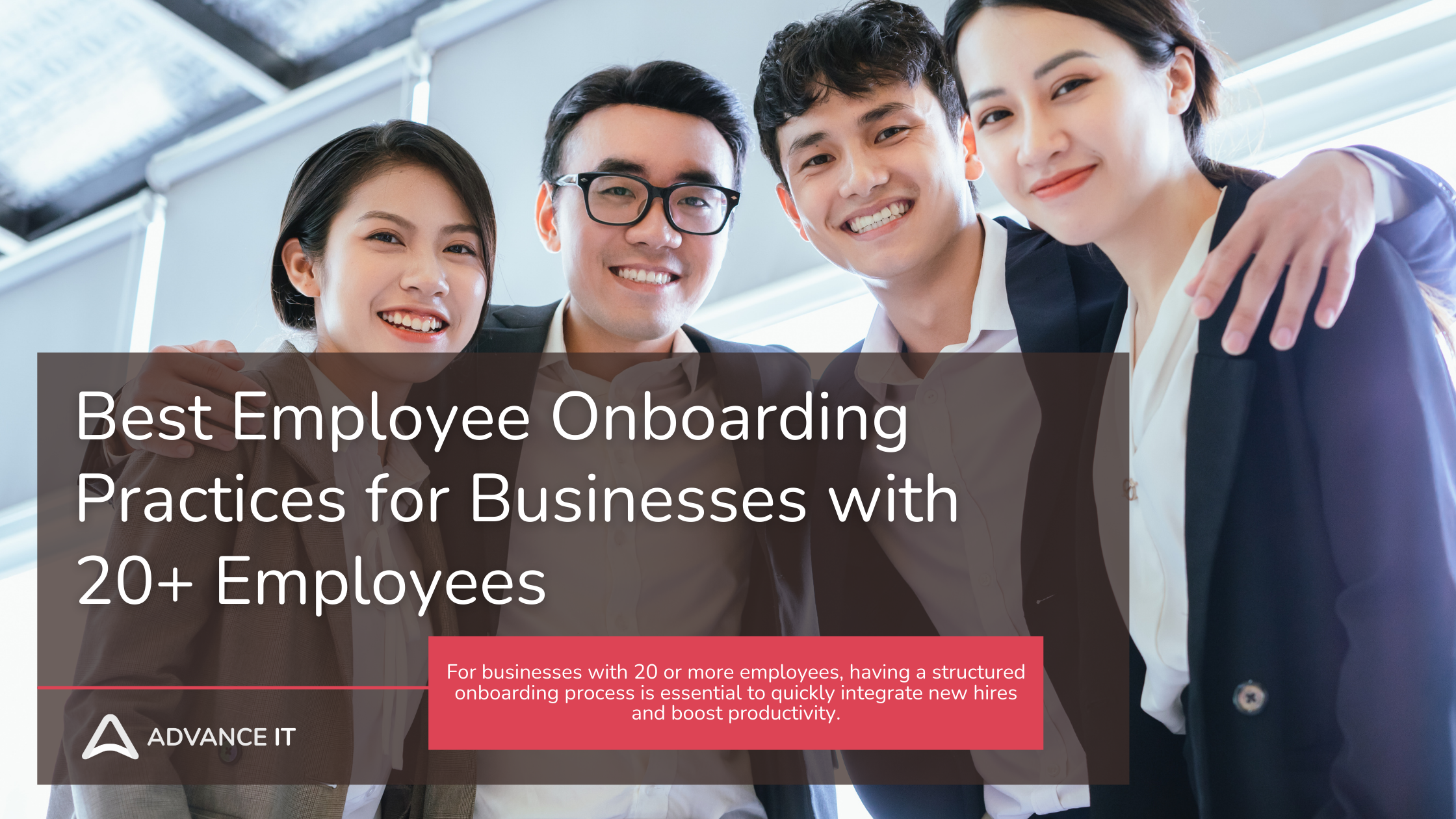Best Employee Onboarding Practices for Businesses with 20+ Employees
For businesses with 20 or more employees, having a structured onboarding process is essential to integrate new hires and boost productivity quickly. Effective onboarding equips employees with the necessary tools and knowledge to perform their roles and fosters a sense of belonging and engagement from day one. In this guide, we’ll explore best practices for onboarding that help growing businesses streamline their processes, ensuring new employees are set up for long-term success.
Why Effective Onboarding Matters
Employee onboarding is more than just filling out paperwork and setting up a desk. It’s the first impression that a company makes on new hires, setting the tone for their entire experience. According to the Society for Human Resource Management (SHRM), organizations with a strong onboarding process improve new hire retention by 82% and productivity by over 70%. Structured onboarding can dramatically reduce the time new employees take to reach peak productivity, leading to better overall performance and reduced turnover.
Common Onboarding Challenges for Mid-Sized Businesses
Businesses with 20-50 employees often struggle with:
Lack of Standardization: Without a consistent process, onboarding experiences can vary widely from one employee to another.
Information Overload: Bombarding new hires with too much information at once can lead to confusion and overwhelm.
Limited Resources: Smaller HR teams may lack the time and tools needed to support a comprehensive onboarding process.
Best Practices for Effective Employee Onboarding
1. Create a Structured Onboarding Plan
A structured onboarding plan ensures that all new hires receive the same level of guidance and support. This plan should cover the first week, the first 30 days, and the first three months, providing a roadmap for both the employee and the manager.
Elements to Include:
Pre-Onboarding Activities: Send a welcome email, complete the necessary paperwork online, and provide an overview of what to expect on their first day.
Orientation Session: Include company culture, values, mission, and a virtual or in-person tour of the workspace.
Role-Specific Training: Outline clear objectives, key responsibilities, and deliverables specific to the new hire’s position.
Key Benefit: A structured plan reduces uncertainty and helps employees get up to speed faster, improving their confidence and productivity.
2. Assign a Mentor or Buddy
Assigning a mentor or onboarding buddy to each new hire can significantly improve their integration into the company culture. This person serves as a go-to resource for questions and guidance, making it easier for new employees to adapt to their new environment.
Benefits of a Mentorship Program:
Faster Integration: New hires learn the company’s values, processes, and expectations more quickly.
Improved Engagement: Mentors provide support, leading to higher morale and job satisfaction.
3. Use Technology to Streamline the Onboarding Process
In today’s digital age, leveraging technology can make the onboarding process more efficient and engaging. Implementing an onboarding software solution allows businesses to automate routine tasks, track progress, and centralize all necessary information.
Recommended Tools:
BambooHR: Simplifies onboarding with automated checklists, welcome emails, and progress tracking.
WorkBright: Offers a mobile-friendly platform that lets employees complete onboarding tasks before their first day.
Trello: Helps visualize the onboarding workflow and ensures nothing is missed during the process.
4. Incorporate IT Support Services for Seamless Integration
For businesses looking to enhance their onboarding processes, integrating IT support can play a crucial role in ensuring a smooth start for new hires. IT services offer scalable solutions that streamline technical setups, manage access to software tools, and secure sensitive data during the onboarding phase. Ensuring that new employees have the right technology support from day one boosts their confidence and allows them to focus on learning their roles without unnecessary delays.
Key Benefit: Reliable IT support eliminates technical barriers, allowing new hires to settle into their roles quickly and efficiently.
5. Foster a Culture of Continuous Learning
Onboarding should not stop after the first few weeks; instead, it should evolve into continuous development. Encourage new hires to engage in training and development opportunities that will help them grow in their roles.
Action Steps:
Schedule regular check-ins to address challenges and gather feedback.
Provide access to online courses, workshops, and industry certifications.
Set up a clear career development path to motivate employees to reach their full potential.
Key Benefit: A culture of learning leads to higher employee engagement and long-term retention, as individuals feel valued and invested in their professional growth.
Measuring the Success of Your Onboarding Process
To assess the effectiveness of your onboarding process, track these key metrics:
Time to Productivity: Measure how long it takes for new hires to become fully productive.
Employee Retention Rates: Track the percentage of new employees who remain with the company after six months to a year.
Onboarding Satisfaction Scores: Collect feedback from new hires to understand their experience and identify areas for improvement.
Final Thoughts
Optimizing your onboarding process for a business with 20+ employees is vital to your company's long-term success. By creating a structured plan, integrating mentorship, leveraging technology, and ensuring seamless IT support, you can transform your onboarding from a routine task into a strategic advantage.
Implement these best practices to not only welcome new employees but to empower them to thrive in their roles, contributing to your company’s growth and success from day one.





